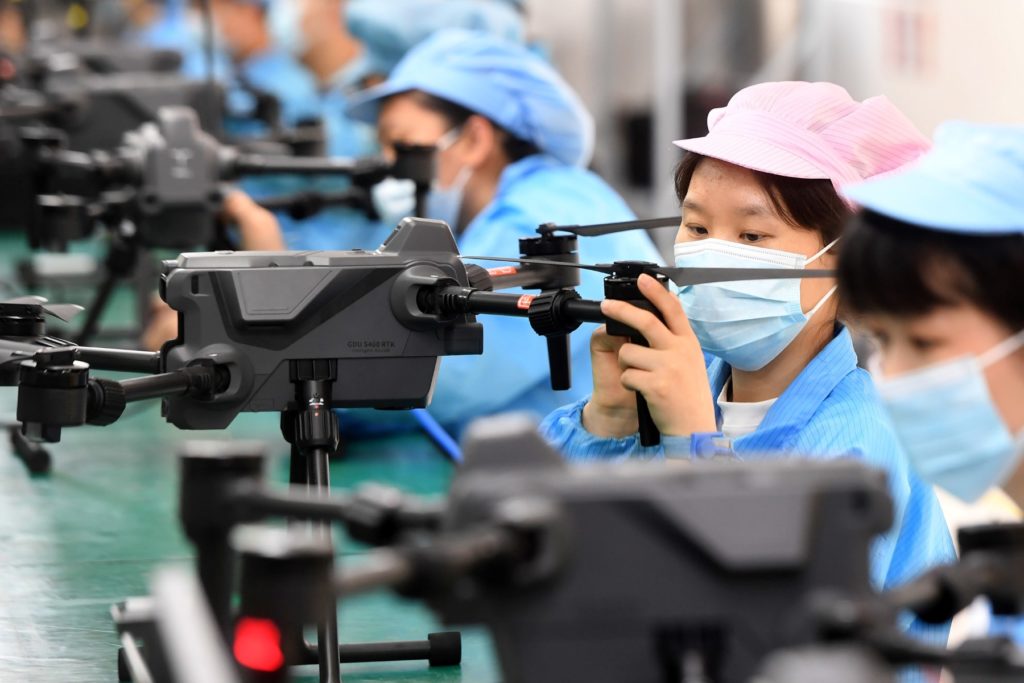São Paulo – China is and will continue to be the main global “manufacturer.” But the pandemic, polarization with the United States, booming internal market, and new “pathways” for growth of the Asian giant are creating opportunities for other countries to expand their presence as suppliers of manufactured goods. In this new order of production chains, Southeast Asian countries are at the forefront, but there are opportunities to replace some spaces left by the Chinese far away from Asia: In Brazil.
After Donald Trump took office as president of the United States (2017-2021), the world’s largest economy introduced measures to reduce China’s presence in the supply of manufactured goods to that country. Restrictions on the export of microchips to China, Chinese investment in US companies, lawsuits at the World Trade Organization (WTO), and increased import tariffs on Chinese products were announced. Trump’s successor, Joe Biden, sustained and deepened this policy.

The break in the global production chain has led countries and companies to reassess their dependence on China to supply manufactured goods. Another factor: The Chinese government indicated the country’s growth would be lower, with other sources of expansion.
According to Economics professor of the Pontifical Catholic University of São Paulo (PUC-SP), Antonio Carlos Alves dos Santos, all the changes China and global geopolitics are going through are not expected to diminish the country’s presence in the global economic scenario. “The companies are still in China, perhaps with a greater focus on the local market, which does not mean that they will stop exporting their production. They will continue to export. But during the pandemic, it became clear depending on a single market was risky,” said Santos.
In Santos’ assessment, the polarization observed between the United States and China is not a government policy but a state policy. Even if the two countries presidents change in the coming years, the influence zones and geopolitical processes in place could remain.
Cost at the heart of the debate
Part of the manufacturing sectors that left China in recent years, such as smartphones, clothing, footwear, electronics, and auto parts, went to India, Thailand, Bangladesh, Vietnam, and Malaysia, mainly in Southeast Asia and even Mexico, in North America. Part of this change can also be attributed to the cost of labor. The increase in labor costs and China’s shift towards a cutting-edge technology industry, such as airplanes and electric cars, said Santos, is a natural result of the maturation of the Chinese economy. In the opening picture, an illustration of this movement: A drone factory in China.
President of the Brazilian Association of Toy Manufacturers (Abrinq), Synésio Costa, said the sector had seen a drop in the presence of Chinese goods in the Brazilian market. “In the toy sector, in 2017, 2018, and 2019, the Brazilian industry had a share between 45% and 48% in the local market. Today, that percentage is 75%, and we see products from China have lost ground here,” said Costa.
“Plants are moving to Vietnam. Now, companies have to pay income tax and social security in China. Older Chinese entrepreneurs do not want to pay these taxes; it is a novelty not part of their nature (as entrepreneurs),” explained Costa, indicating North American trade policies and the search for cutting-edge technology as other reasons for China’s new manufacturing reality. “In China, labor now costs USD 450 per month, but other countries in Southeast Asia still have labor at USD 30 a month,” he compared.

President of Bibi, a Brazilian children’s footwear manufacturer with two plants and customers in 60 countries, Andrea Kohlrausch assessed during and after the pandemic that buyer markets experienced supply disruptions, leading them to “decentralize” dependence on a single market. Even so, China remains the world’s biggest shoe manufacturer.
Kohlrausch claimed Brazilian companies in this sector have the potential to take advantage of rising opportunities, as the industry has qualified over the years and has quality products and “excellent” design. “Bibi, for example, has a future project to ‘Paint the World Orange’ (a reference to the company logo’s color). In addition to exporting our shoes with our brand and design, we are also looking to internationalize our business model of omnichannel stores (which operate in several sales channels in an integrated manner), starting with the Latin American market,” she said.
Not just exports
Santos, from PUC-SP, said taking advantage of the opportunities arising from the new Chinese moment is a matter of country strategy. “Competing depends on price and adequate strategy. This applies both to attracting foreign direct investment and exports. If Germany did it, why can’t Brazil do it? Even with changes in government, Brazilian state policy does not change much,” says Santos.
Costa, in turn, believes the Chinese loss of market share already observed in the Brazilian market could occur in exports in two years, and there are opportunities for Brazilian manufacturers. But to beat the competition, a strategy is needed. “We need to travel, visit international shows, and learn about demand abroad. It is, indeed, a mega opportunity,” he said.
Translated by Elúsio Brasileiro




